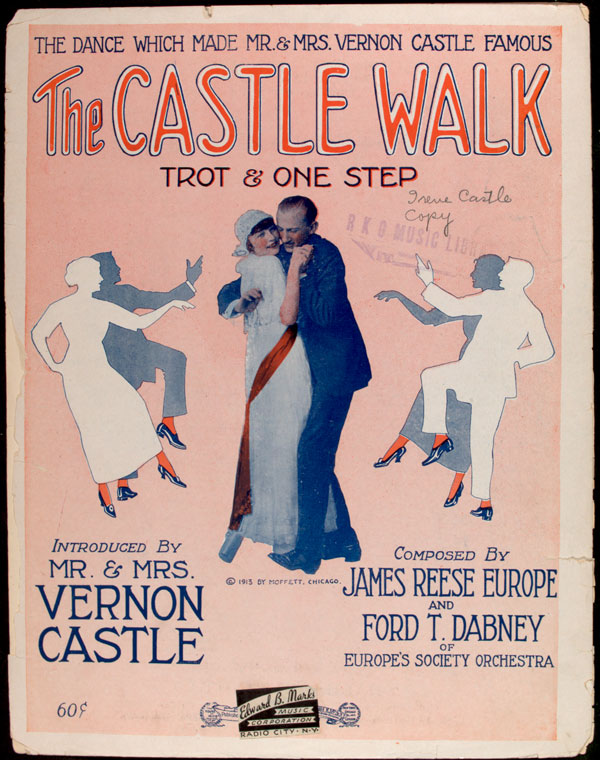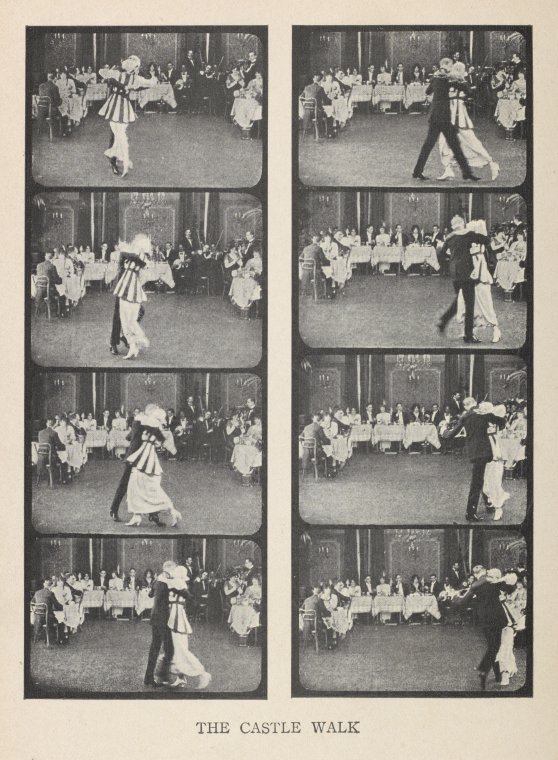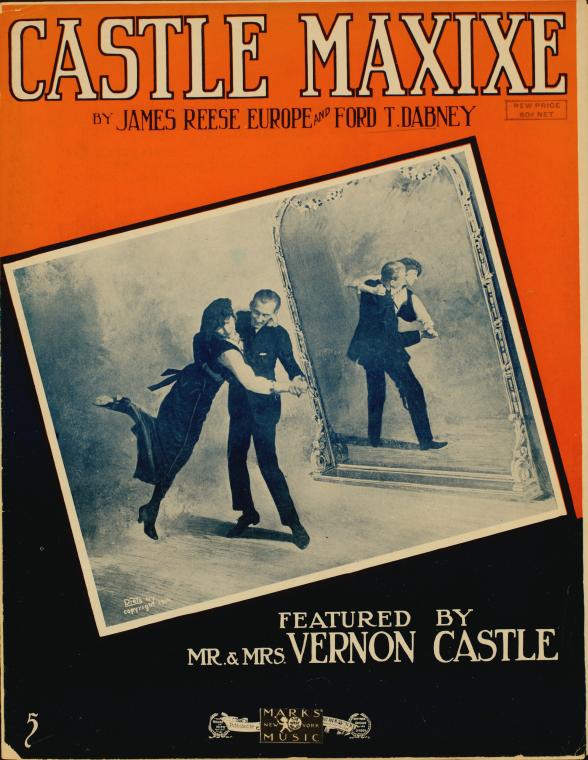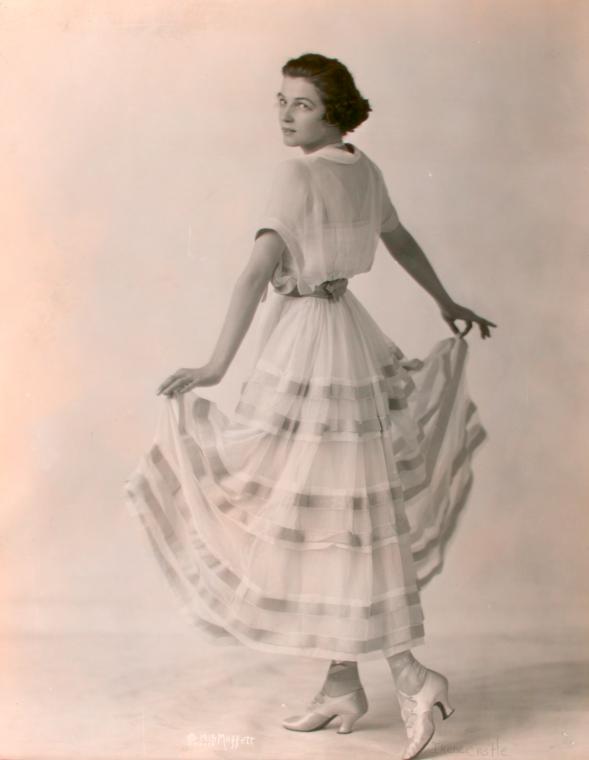100 Years (Or So) Ago in Dance: The Whirl of Life
Happy New Year! Rather than look back at 2015, we’re going back 100 years for the first in a series of blog posts featuring events in dance history from (about) 100 years ago. And I’m starting with something that is personally meaningful to me, as a ballroom dancer: Vernon and Irene Castle in the silent film, The Whirl of Life.
Our copy of the film came to us from the Museum of Modern Art, whose 16mm print was made in 1947 from a 35mm tinted nitrate print that Irene Castle lent to the Museum. MoMA’s is the only print film copy now known to exist of the movie.
The Whirl of Life premiered in October of 1915, and built on the Castles’ already extraordinary popularity. By the film’s release, they had created a dance named after themselves, the Castle Walk, and their African American band director, James Reese Europe, had created “Castle” song versions of popular dances of the day.
Irene had also become a fashion icon for her slender figure, simple, comfortable dresses, and the Castle Bob hairstyle she had adopted for convenience.
The Castles strove to make their dancing high toned enough to be acceptable to the upper classes at a time when social dancing, particularly if it was African American in origin, was considered dangerous and immoral. In one of her memoirs, Castles in the Air, Irene described their appeal simply as “we were clean-cut; we were married and when we danced there was nothing suggestive about it.” Their ability to sell social dancing as “fun” and “healthy” was a reason for their success, since a good part of their income came from the lessons Vernon taught to the children of wealthy New Yorkers. As advised by the Castles in a souvenir program from their first American tour in 1914:

The Whirl of Life was co-written by Vernon, and was loosely based on the Castles’ own lives. It told the story of how they first met, to the dismay of their romantic rivals, and of their overnight success at the Café de Paris. Irene's jilted suitor becomes the villain of the film, scheming to open a competing show and kidnapping Irene to prevent the success of the Castles' own production.
The film received mostly positive reviews, with the Detroit Free Press calling it "a blending of comedy and drama surprisingly well done" (November 8, 1915), and the Philadelphia Inquirer promising readers that "the drama is a real one with an unusual number of thrilling situations (November 21, 1915). The New York Tribune was less complimentary, complaining that "for a reel or two it was interesting, but shortly afterward it fell into a snarl of melodrama, and all was lost" (October 18, 1915). Today's audiences might be more inclined to agree with the Tribune, since the overblown dialogue included such groaners as

More interestingly, for dance buffs, there are multiple dance sequences which highlight the Castles’ elegant style. On the first reel, from about 26:00 to 27:06 you can see a reenactment of their first Cafe de Paris performance, where they were first launched as the fashionable dance couple of the day, and on the second reel from about 21:00 onward you’ll find their culminating performance, interspersed with the film’s two principal villains in a struggle to the death.
If you’re interested in learning more about the Castles, you can check out the following books in our collections:
Shall We Dance?: The True Story of the Couple Who Taught the World to Dance, by Douglas Thompson; with a foreword by Craig Revel Horwood
Vernon and Irene Castle's Ragtime Revolution, by Eve Golden
Castles in the Air: As Told to Bob and Wanda Duncan, by Irene Castle
My Husband, by Mrs. Vernon Castle (Irene Castle)
Read E-Books with SimplyE
 With your library card, it's easier than ever to choose from more than 300,000 e-books on SimplyE, The New York Public Library's free e-reader app. Gain access to digital resources for all ages, including e-books, audiobooks, databases, and more.
With your library card, it's easier than ever to choose from more than 300,000 e-books on SimplyE, The New York Public Library's free e-reader app. Gain access to digital resources for all ages, including e-books, audiobooks, databases, and more.
If you don’t have an NYPL library card, New York State residents can apply for a digital card online or through SimplyE (available on the App Store or Google Play).
Need more help? Read our guide to using SimplyE.




